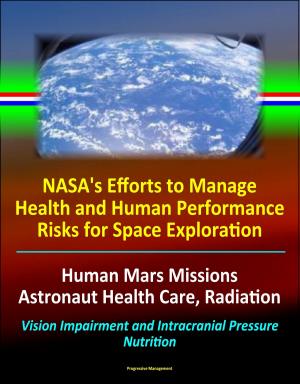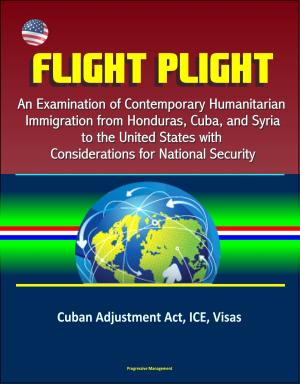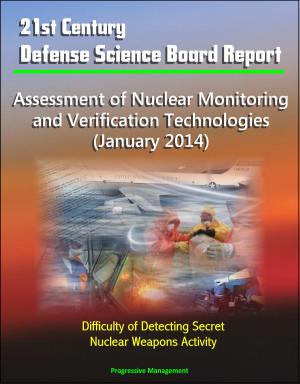Radionuclide and Radioisotope Encyclopedia: Cesium-137, Iodine-131, Plutonium, Cobalt, Tritium, Radium, Strontium, Technetium-99, Thorium, Uranium - Radiation Health Effects and Toxicology
Nonfiction, Science & Nature, Science, Physics, General Physics, Social & Cultural Studies, Political Science| Author: | Progressive Management | ISBN: | 9781458016836 |
| Publisher: | Progressive Management | Publication: | March 17, 2011 |
| Imprint: | Smashwords Edition | Language: | English |
| Author: | Progressive Management |
| ISBN: | 9781458016836 |
| Publisher: | Progressive Management |
| Publication: | March 17, 2011 |
| Imprint: | Smashwords Edition |
| Language: | English |
This authoritative, 1800 page collection of official documents provides comprehensive details about the health and medical impacts of eleven important radioisotopes, some of which are major factors in nuclear power plant accidents: Cesium-137, Iodine-131, Plutonium, Cobalt, Tritium, Radium, Strontium, Technetium-99, Thorium, Uranium, and Americium. Many have a complete toxicological profile from the Agency for Toxic Substances and Disease Registry (ATSDR).
CESIUM: Radioactive cesium-137 is produced when uranium and plutonium absorb neutrons and undergo fission. Examples of the uses of this process are nuclear reactors and nuclear weapons. The splitting of uranium and plutonium in fission creates numerous fission products. Cesium-137 is one of the more well-known fission products. Cesium-137 in the environment came from a variety of sources. The largest single source was fallout from atmospheric nuclear weapons tests in the 1950s and 1960s, which dispersed and deposited cesium-137 world-wide. However much of the cesium-137 from testing has now decayed. Nuclear reactor waste and accidental releases such as the Chernobyl accident in the Ukraine release some cesium-137 to the environment. Spent nuclear fuel reprocessing plant wastes may introduce small amounts to the environment.
IODINE: A large amount of epidemiological literature exists on the health outcomes in populations that were exposed to environmental releases of radioiodine. These include releases from explosions of nuclear bombs such as the Marshall Islands BRAVO test, the largest U.S. detonation (15 megatons), and from the Nevada Test Site; releases from nuclear fuel production facilities such as the Hanford Nuclear Site; and accidental releases from nuclear power plants such as the Chernobyl explosion and fire. In general, releases of these types result in mixed exposures to a variety of radioisotopes and to radiation doses from both external and internal exposure. However, doses from radioiodine that are significant to health derive largely from internal exposure as a result of uptake of relatively short-lived radioiodine isotopes into the thyroid gland. Thus, effects on the thyroid attributable to radioiodine that were subsequently observed, in some cases, years after the event, derived from exposures to the relatively high levels of radioiodine found immediately after the event, rather than from sustained exposures.
PLUTONIUM: Plutonium is a silvery white metal that exists as a solid under normal conditions. It is produced when uranium absorbs an atomic particle. Trace amounts of plutonium occur naturally, but large amounts have been produced in nuclear reactors. Trace levels of plutonium can be found in the environment, from past nuclear bomb tests, in several forms called isotopes. The most common plutonium isotopes are plutonium-238 and plutonium-239. Plutonium undergoes radioactive decay.
This is a privately authored news service and educational publication of Progressive Management.
This authoritative, 1800 page collection of official documents provides comprehensive details about the health and medical impacts of eleven important radioisotopes, some of which are major factors in nuclear power plant accidents: Cesium-137, Iodine-131, Plutonium, Cobalt, Tritium, Radium, Strontium, Technetium-99, Thorium, Uranium, and Americium. Many have a complete toxicological profile from the Agency for Toxic Substances and Disease Registry (ATSDR).
CESIUM: Radioactive cesium-137 is produced when uranium and plutonium absorb neutrons and undergo fission. Examples of the uses of this process are nuclear reactors and nuclear weapons. The splitting of uranium and plutonium in fission creates numerous fission products. Cesium-137 is one of the more well-known fission products. Cesium-137 in the environment came from a variety of sources. The largest single source was fallout from atmospheric nuclear weapons tests in the 1950s and 1960s, which dispersed and deposited cesium-137 world-wide. However much of the cesium-137 from testing has now decayed. Nuclear reactor waste and accidental releases such as the Chernobyl accident in the Ukraine release some cesium-137 to the environment. Spent nuclear fuel reprocessing plant wastes may introduce small amounts to the environment.
IODINE: A large amount of epidemiological literature exists on the health outcomes in populations that were exposed to environmental releases of radioiodine. These include releases from explosions of nuclear bombs such as the Marshall Islands BRAVO test, the largest U.S. detonation (15 megatons), and from the Nevada Test Site; releases from nuclear fuel production facilities such as the Hanford Nuclear Site; and accidental releases from nuclear power plants such as the Chernobyl explosion and fire. In general, releases of these types result in mixed exposures to a variety of radioisotopes and to radiation doses from both external and internal exposure. However, doses from radioiodine that are significant to health derive largely from internal exposure as a result of uptake of relatively short-lived radioiodine isotopes into the thyroid gland. Thus, effects on the thyroid attributable to radioiodine that were subsequently observed, in some cases, years after the event, derived from exposures to the relatively high levels of radioiodine found immediately after the event, rather than from sustained exposures.
PLUTONIUM: Plutonium is a silvery white metal that exists as a solid under normal conditions. It is produced when uranium absorbs an atomic particle. Trace amounts of plutonium occur naturally, but large amounts have been produced in nuclear reactors. Trace levels of plutonium can be found in the environment, from past nuclear bomb tests, in several forms called isotopes. The most common plutonium isotopes are plutonium-238 and plutonium-239. Plutonium undergoes radioactive decay.
This is a privately authored news service and educational publication of Progressive Management.















